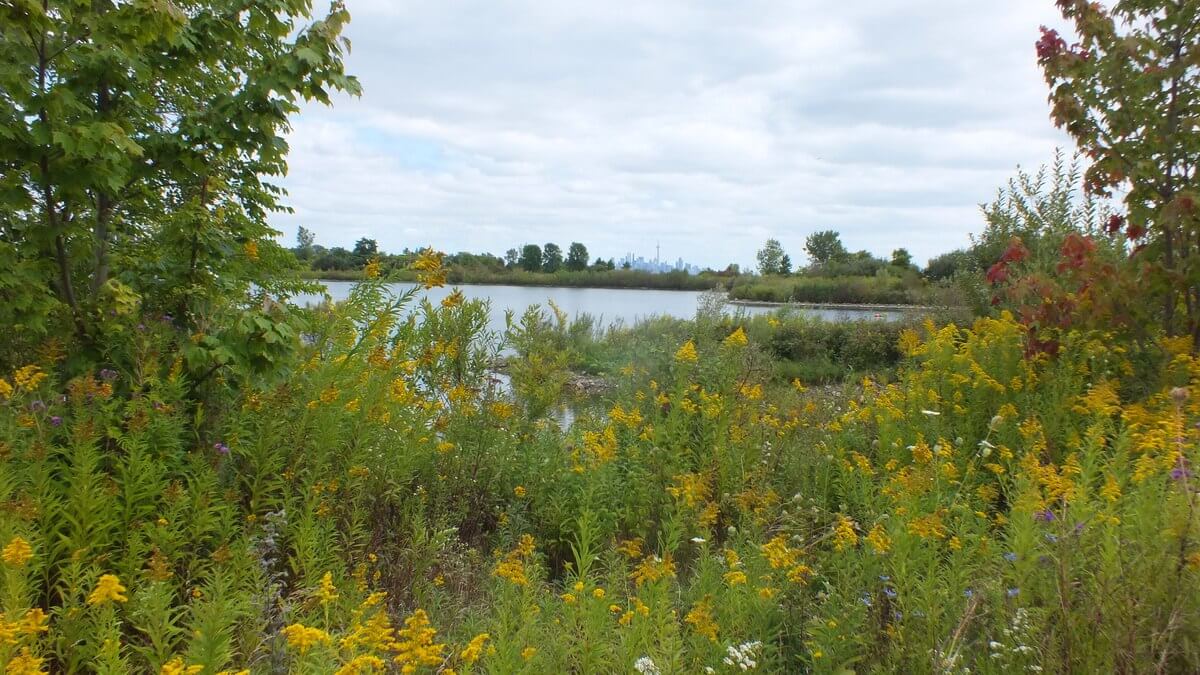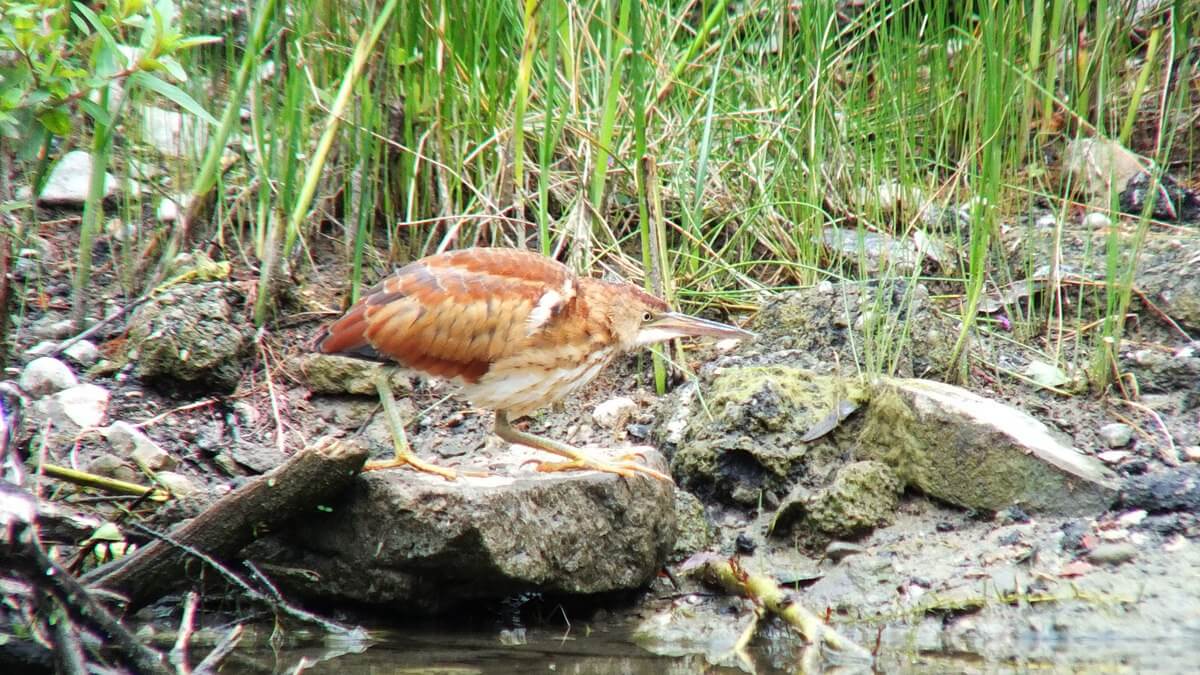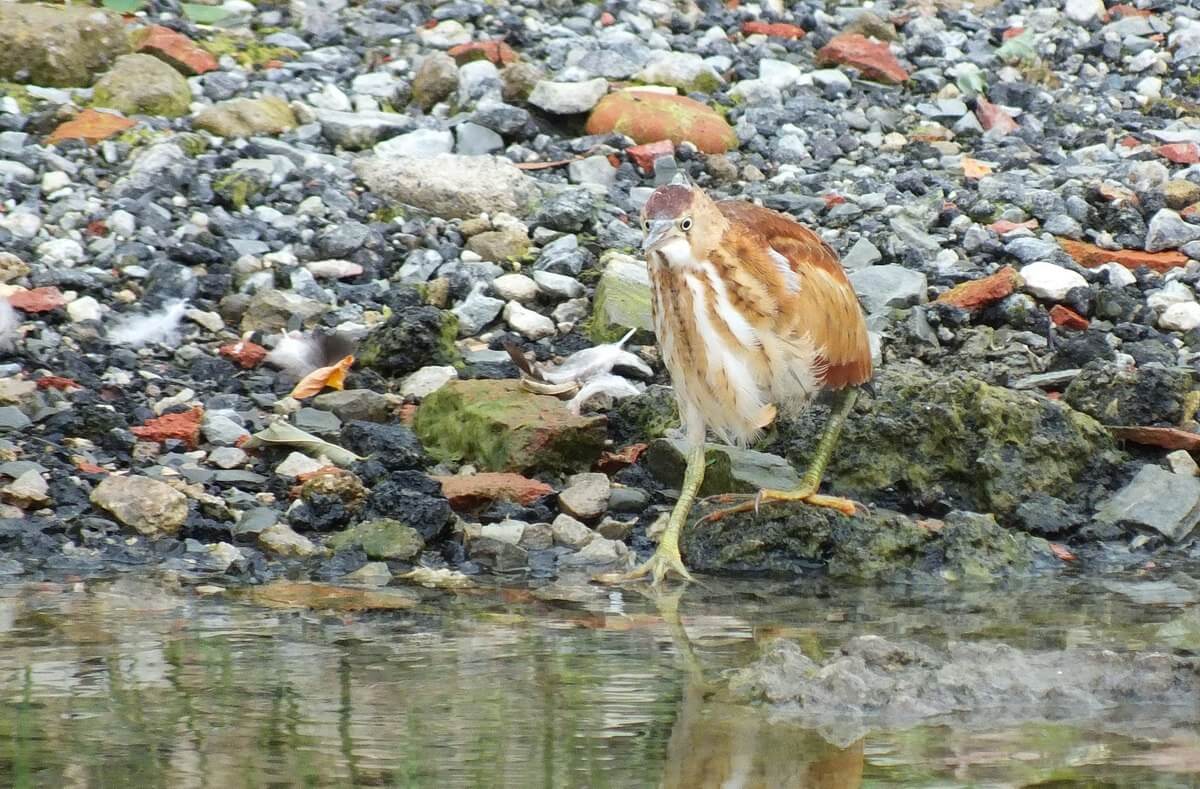Juvenile Least Bittern At Colonel Samuel Smith Park

One summer, people had been reporting sightings of one, if not two, Juvenile Least Bitterns that have been hanging out at Colonel Samuel Smith Park at the lakeshore in Toronto. Bob and I went to the Park to look for a flutter of Monarch Butterflies one morning, but coming up empty-handed, we turned our attentions to birdwatching. It wasn’t too far from our location on Whimbrel Point that we found one of the Least Bitterns. The bird was much smaller than expected.
As luck has it, our search for the butterflies took us almost to the end of Whimbrel Point as that is where a gathering of them had been spotted the evening before, and it had been in the channel running parallel to the peninsula that the Bitterns had been sighted in previous days.
It was an ideal location with calm water separated from the harbour by a narrow strip of land and a gentle current supplying nutrients so that fish and crustaceans could thrive. Consequently, the Least Bittern had a good supply of food.
When Bob and I approached the edge of the pond the first time, it took us a few minutes to spot the Bittern. It was huddled up between some logs and boulders looking very much like some rust-coloured rocks laying about the narrow beach. Like the American Bittern, the Least Bittern hunches when at rest making its long neck seem to disappear.
Before long, the Bittern was on the move and seemed quite accustomed to the presence of people, probably because birdwatchers have been flocking to that location to photograph this bird, the smallest member of the North American herons.
Least Bitterns are not much larger than an American Robin, which differentiates them from all other species of herons. At a mere 30 centimetres (11.8 in.) in length, a Bittern’s oversized feet seem too large for its body, but it is the long toes and curved claws that give these birds an advantage when it comes to foraging for food.
Although this juvenile fished from the edge of the shallow water, Least Bitterns are adept at catching prey in deep water by using their long toes to grasp clumps of reeds or other vegetation growing there. Thus balanced above the water, a Least Bittern extends its long neck close to the water’s surface so it is ready to strike a fish with its thin, pointed yellow bill.
As Bob and I looked on, this young Least Bittern did its fair share of stalking. Crouched low with its neck poised for striking, it was the picture of patience.
An adult male of this species would have black plumage on top of the head, on the back and tail, whereas a female would be glossy brown in those areas. It is hard to say whether this juvenile Bittern is a male or female given the orangey-brown feathers on the head and back, but its tail does exhibit some black feathers already.
We found the Least Bittern to be a very beautiful bird. Rust and chestnut-coloured streaks against the long, whitish throat flow seamlessly into its similarly-coloured chest, and piercing yellow eyes stand out against a pale face, but it is the warm, rich orange-brown plumage of its neck, back and sides that really impressed me.
We did not tire of watching this naive and trusting Least Bittern and studied its movements for over and hour. It showed no fear and moved freely along both shores of the narrow channel, always keeping close to the water . The bird was not distracted from fishing and came up numerous times with little minnows held in its slender bill…
which has a narrow dark ridge along the top.
Least Bitterns eat a variety of creatures including insects, crustaceans, fish, even snakes and salamanders. When this juvenile tired of hunting on one side of the narrow waterway, it deftly maneuvered itself to the opposing shore…
and struck another stationary pose. If a Least Bittern is alarmed, it generally will extend its long neck straight upwards, bill pointed at the sky, with its streaked throat and chest facing the perceived threat. When in amongst tall marsh vegetation, the vertical stripes of the brown-on-white plumage is easily mistaken for weathered marsh grasses, so it provides excellent camouflage.
Mature Least Bitterns are more often heard and rarely seen because they remain in dense marsh habitat. They are capable of maneuvering handily through tangled vegetation owing to their extremely narrow bodies, and these clever birds often will utilize bent cattails and other sturdy plants as a base from which to forage.
Least Bitterns are at risk owing to loss of habitat, namely draining of wetlands for alternate purposes such as farming and urban development. They require large, quiet marshes near ponds or sluggish streams so even decreasing the size of a wetland and increasing human activity there can lead to a decline in their numbers. This species of bird and its nests are presently protected by Ontario’s new Endangered Species Act, 2007, and the Migratory Birds Convention Act. Given the number of photographers and birdwatchers crowding around to see this young Least Bittern, it is no wonder that it finally abandoned the area.
Frame To Frame – Bob and Jean

















Beautiful shots !!
Thanks for checking out our blog, and I’m glad you enjoyed our photographs.